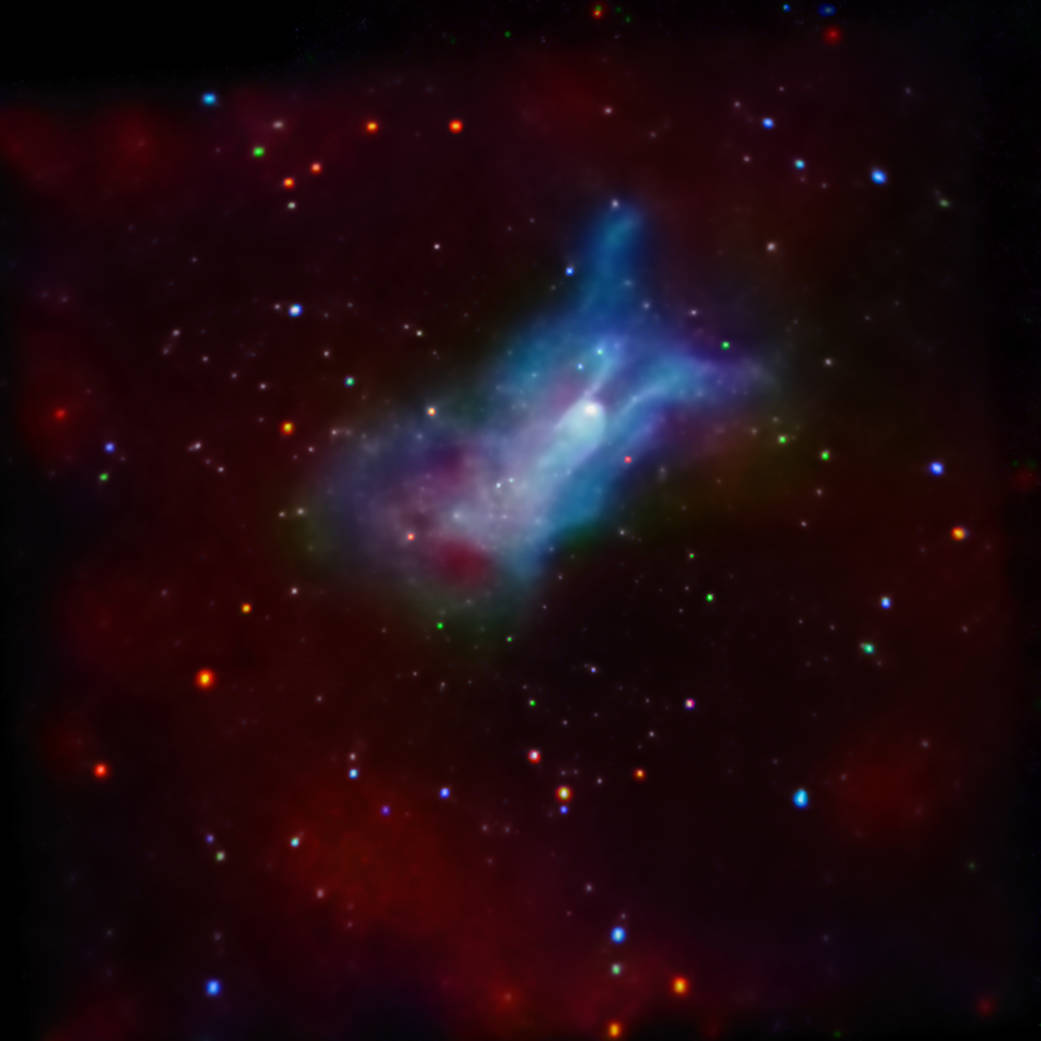The Chandra image of G327.1-1.1 shows an outward-moving shock wave (faint red color) and a bright pulsar wind nebula (blue). The pulsar wind nebula appears to have been distorted by the combined action of a reverse shock wave, which may have flattened it, and by the motion of the pulsar, which created a comet, or lobster-like tail. An asymmetric supernova explosion may have given a recoil kick to the pulsar, causing it to move rapidly and drag the pulsar wind nebula along with it. Two structures resembling lobster claws protrude from near the head of the pulsar wind nebula. The origin of these features, which may be produced by the interaction of the pulsar wind with the reverse shock, is unknown.
Image credit: NASA/CXC/GSFC/T. Temim et al.



























